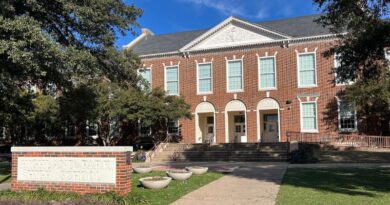Big Bones: Anthropologist Visits St. Mark’s
The human genus got a little bigger on Sept. 10, when paleoanthropologist Lee Berger, along with his team, announced the discovery of 15 prehistoric bodies in the Rising Star Cave in South Africa.
These bones represent an entirely new species of human ancestor, dubbed Homo naledi. The news has astounded the scientific community, but one St. Mark’s teacher was already expecting the big announcement.
This summer, St. Mark’s science teacher John Mead traveled to South Africa to meet up with Berger and his team. He explored the cave at Berger’s dig site and held rocks that contained the fossils of the ancient hominids. Mead also worked with researchers using a 3-D scanner to analyze 200 teeth.
“This particular Rising Star site was the most prolific fossil site in all of Africa in all of our recorded history,” Mead said. “That was really the chance of a lifetime. I’m especially very thankful to Dr. Berger for the invitation to go down there. Secondary school educators don’t often get the chance to go behind the scenes in the midst of a big discovery like this.”
Mead’s relationship with Berger, who had already made global news with the discovery of another prehistoric skullin 2009, began with a simple Facebook friend request. On a whim, Mead asked if Berger would be interested in fielding a few questions from his science class.
Berger was able to do one better and spoke in person at St. Mark’s in 2012. He returned again last year, teasing his latest discovery, and again on Sept. 30, following a presentation at the Perot Museum.
Joining Berger at two assemblies were three “cave astronauts,” researchers who crawled through narrow, dangerous tunnels to reach the cave chamber containing Homo naledi. Students watched footage of the explorers shimmying through passageways and navigating over deep chasms.
Berger presented the school with the first casts of Homo naledi for students to study up close.
— Staff report








